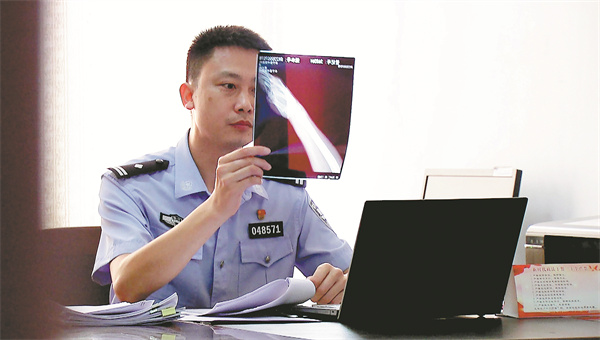Beyond the lab: a life in forensics


For most people, the thought of working with lifeless bodies and investigating crime scenes can be daunting. But for Xia Jiaquan, a forensic pathologist in Changning, Sichuan province, it has been his life's work for over two decades.
Xia's path began at 18, when he entered university to study clinical medicine.
"More than half of my classmates chose to become doctors or enter other medical fields," he recalled. "Only a few, like me, went into forensic pathology."
His choice, he said, traced back to his childhood, where a deep admiration for law enforcement inspired him to combine medical expertise with legal practice.
The job, Xia emphasized, demands not only scientific precision but also strong mental resilience.
"Forensics isn't confined to the lab," he explained. "We work in forests, rivers, abandoned houses, and city apartments. We're constantly tested by what we see, smell, and touch at crime scenes."
Confronted with bodies in varying stages of decomposition or injury, Xia stays calm and methodical, using autopsy and pathology to determine the cause, time, and manner of death. "After years in the field, managing emotions comes naturally," he said.
One case that has stayed with him happened early in his career. On a bitter winter morning, police found a man lying unconscious and covered in blood by a riverside. There were no witnesses, and in those days, when surveillance systems were rare, there were few leads to follow.
Examining the crime scene, Xia noticed something unusual — three distinct types of bloodstains, suggesting multiple people had been involved. Through meticulous evidence collection and analysis, he and his team reconstructed the fight between the victim and the attackers. The breakthrough led to the arrest of two injured suspects.
"It's about patience and attention to detail," Xia said. "We can't afford to overlook even the smallest clue — it's often the key to cracking a case."
In another investigation, the perpetrators tried to destroy evidence by burning and dismembering a body, dumping the remains in black plastic bags among piles of garbage and debris. Xia combed through more than 200 trash bags before finding two that contained crucial body parts.
Working late into the night, he and his team examined each piece and compiled detailed forensic reports that enabled police to arrest the suspects.
"Our job isn't a typical nine-to-five," he said. "Day or night, weekdays or weekends — we can be called in at any moment. You must be fully committed."




































